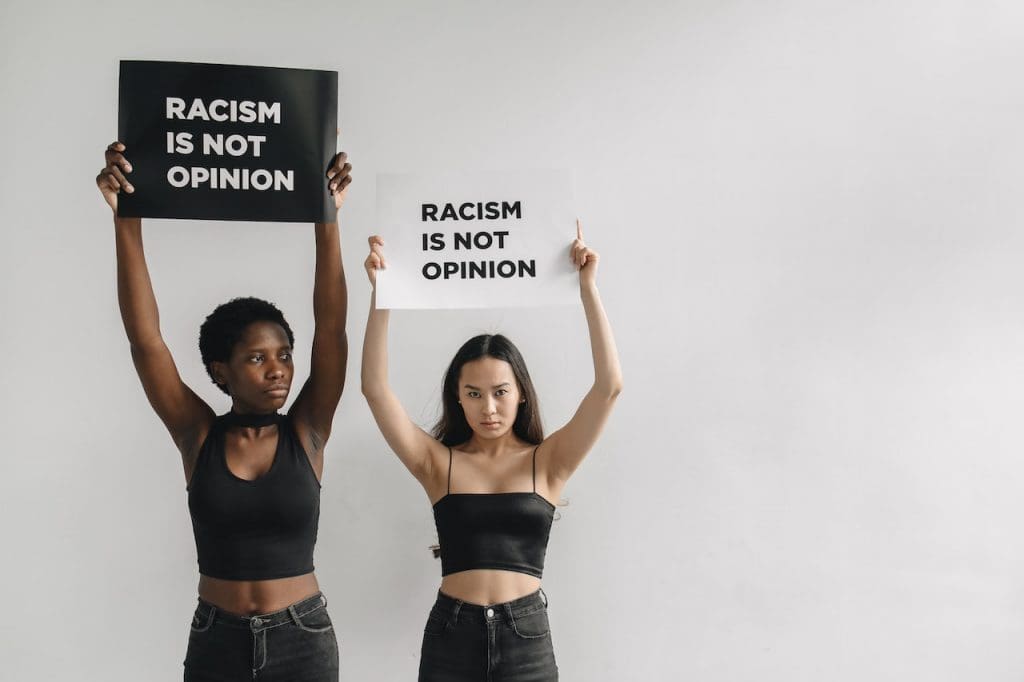Estimated reading time: 3 mins
Racism in the workplace is a reality that cannot be ignored. It can present itself in subtle and overt forms, creating a hostile environment for members of marginalized communities. It is essential to recognize racism in order to effectively address it and create a more equitable workplace. This article will provide an overview of racism in the workplace and discuss strategies for recognizing it.
What Is Racism In The Workplace?
Racism in the workplace refers to any action or attitude that occurs because of someone’s race or ethnicity. It can manifest as discrimination, exclusion, or unfair treatment based on racial identity. These discriminatory practices may range from subtle microaggressions, such as using offensive language or stereotypes, to more overt acts, such as hiring decisions based on race.
Racism in the workplace can take many forms:
- Prejudice – Prejudice is an attitude toward individuals or groups based solely on their perceived differences from oneself. Prejudice can manifest as hostility, avoidance, or even fear.
- Discrimination – Discrimination occurs when someone is treated differently because of their skin color, ethnicity, nationality, or other distinguishing factor. This could include unequal pay, denial of promotions or access to opportunities due to their race.
- Harassment – Harassment involves any unwelcome words or actions directed at another person based on their racial identity. This includes but is not limited to name-calling, verbal abuse, threats of physical violence and derogatory jokes.
- Segregation – Segregation happens when certain groups are segregated from others based on racial identity. This could include being excluded from social activities with coworkers due to one’s race or being denied access to resources available to other employees because of one’s race.
Why Is Recognizing Racism In The Workplace Important?

Recognizing racism in the workplace is essential for creating an inclusive environment where everyone feels valued and respected regardless of their background or identity. Acknowledging racism allows individuals and organizations to address it head-on and work towards eliminating it altogether. Additionally, recognizing racism helps protect employees from experiencing further harm due to discriminatory practices and provides them with support needed to succeed within the organization.
Check this out: How to Stand Up to Workplace Racism
How To Recognize Racism In The Workplace?
There are several strategies for recognizing racism in the workplace:
- Pay Attention To Your Own Reactions – Pay attention to your own reactions when interacting with colleagues who come from different backgrounds than yours. Do you feel uncomfortable around certain people? Do you make assumptions about them without getting to know them first? If so, these may be signs that racism is present in the organization’s culture.
- Listen For Unconscious Bias In Conversations– Listen carefully during conversations at work and take note of any comments that may contain unconscious biases towards particular groups of people (e.g., making assumptions about someone’s abilities/knowledge/experience based on their racial identity). These comments may not always be intended as racist but they can still create an unwelcoming environment for those affected by them.
- Watch For Subtle Behaviors – Racism can often manifest itself through subtle behaviors such as excluding certain individuals from conversations or ignoring ideas suggested by members of marginalized communities (Stipak et al., 2017). Take note of any behavior that may suggest favoritism towards one group over another and bring it up if you feel comfortable doing so in order to address the issue head-on (Stipak et al., 2017).
- Monitor Hiring Practices – Pay attention to how hiring decisions are made within your organization; if certain candidates are consistently passed over despite having similar qualifications as those chosen instead then this could indicate that discrimination is taking place (Gillespie et al., 2019). Look for patterns such as hiring people who look like each other or have similar cultural backgrounds/experiences; this could also be a sign that bias exists within the recruitment process (Gillespie et al., 2019).
Conclusion
Racism in the workplace is a reality that must be addressed in order for organizations to create equitable workplaces where everyone feels valued and respected regardless of their background or identity. Recognizing racism requires paying attention both your own reactions as well as those of others; listening for unconscious bias in conversations; watching out for subtle behaviors; and monitoring hiring practices within your organization (Gillespie et al., 2019; Stipak et al., 2017). By recognizing racism when it occurs we can work towards eliminating it altogether and creating an inclusive environment where everyone can thrive without fear of discrimination due to their racial identity (Gillespie et al., 2019).
